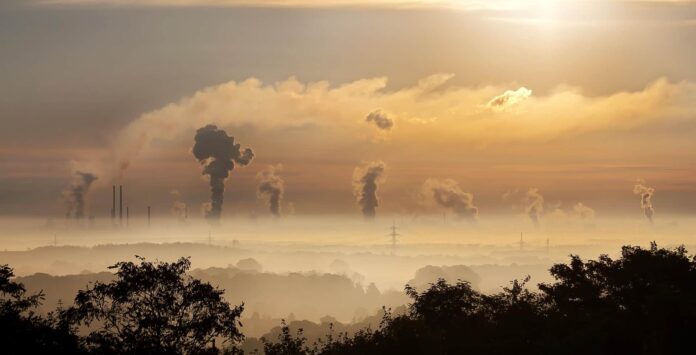Since the beginning of the week, air quality has been significantly affected in the Alpes-Maritimes. The cause: particles from Canadian wildfires that have spread to Europe. It is a concerning episode of air pollution, but conditions are expected to return to normal soon.
For several days, residents of the Alpes-Maritimes have been experiencing a marked deterioration in air quality. Suspended particles, transported thousands of kilometers from the fires in Canada, are settling in the region. These deposits, combined with unfavorable weather conditions — sunshine and low winds — have led to a significant increase in air pollution, particularly along the coastal strip.
The ATMO index, which evaluates air quality daily, shows a level considered “poor” in most of the department. This index is based on concentrations of ozone, nitrogen dioxide, and fine particles. In the Alpes-Maritimes, the regulatory thresholds for ozone have been exceeded in recent days.
According to data provided by the authorities, the information-recommendation procedure was activated on June 10 and maintained for the following day, with specific health recommendations addressed to sensitive populations. The authorities are urging people to limit travel, avoid densely trafficked areas, and restrict intense physical activities.
Precautionary Measures for the Vulnerable
The prefecture specified that vulnerable individuals — pregnant women, infants, the elderly, asthmatics, or those with chronic conditions — must be particularly vigilant. It is advised to avoid any intense physical or sports activities and to limit outings, especially in urban areas and during peak hours.
Schools, nurseries, and facilities hosting the elderly have been asked to adapt their activities. In some cases, outings have been suspended. “The harmful effects of pollution accumulate day after day, not only during peaks,” reminds the Ministry of Health in its official recommendations.
The recommendations also include advice on behaviors to adopt: prioritize public transport or carpooling, avoid open-air burning, and delay agricultural work and the use of inefficient combustion devices.
A Phenomenon Aggravated by the Fires in Canada
These particles originate from the massive fires currently devastating several Canadian provinces. More than 3.2 million hectares have already been burned, an area equivalent to the size of Italy. The situation remains critical, particularly in Saskatchewan, Manitoba, Ontario, and British Columbia. Tens of thousands of people have had to be evacuated.
Carried by high-altitude winds, the smoke crosses the Atlantic and descends to the ground in some European regions. Such a phenomenon is not unprecedented, but it is taking on a particular scale this year due to the early onset and intensity of the fires.
In the Alpes-Maritimes, the situation could improve in the coming days. According to forecasts, the air mass laden with particles should move eastward across Europe. However, ozone concentrations are expected to remain high.
The authorities will continue to update the ATMO index daily and communicate the measures to follow. For now, vigilance remains required for residents, particularly in urban areas and along the coast.


